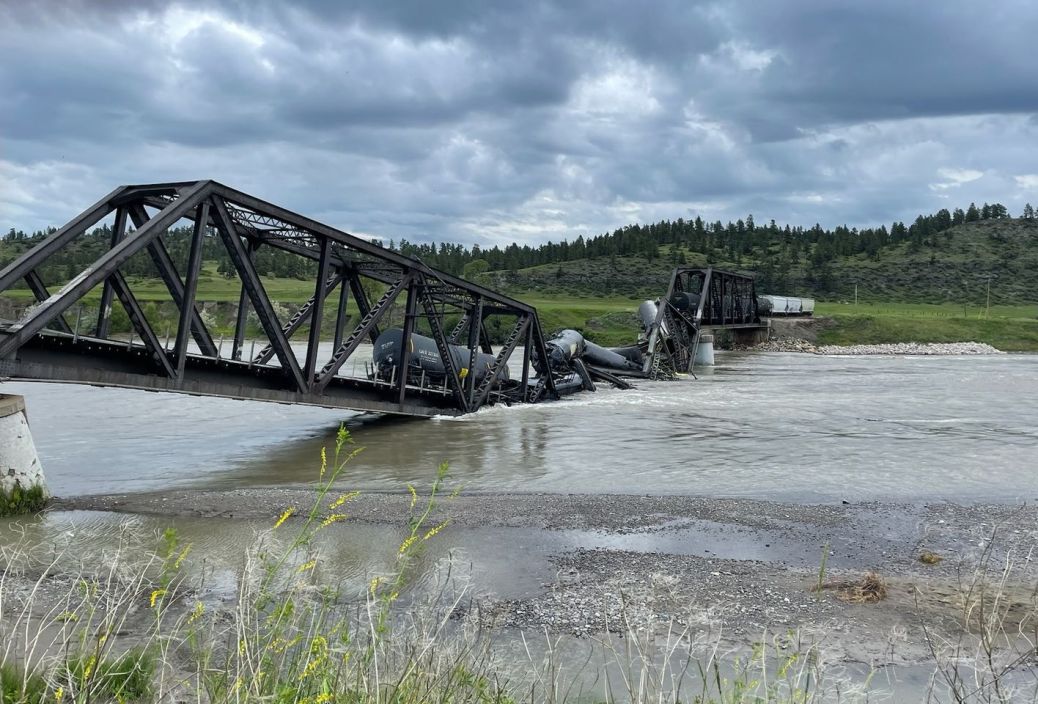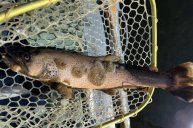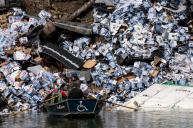Here's some news to really put a damper on your Montana fishing season: Montana Fish, Wildlife, and Parks (FWP) is warning people not to eat trout taken from the Yellowstone River, as the tasty catches are likely contaminated and unsafe for consumption after a railroad bridge collapsed into a section of river 40 miles west of Billings, Montana earlier this summer.
The Yellowstone River, renowned for its beauty and fishing, begins in Yellowstone National Park and flows nearly 400 miles through Wyoming, Montana, and North Dakota. But back on June 24, 17 railcars were derailed and 10 of them toppled over into the Yellowstone after the bridge collapsed, spilling an estimated 419,442 pounds of "asphalt liquified petroleum," molten sulfur, and scrap metal.
The incident has become known as the Stillwater Train Derailment, and though the Environmental Protection Agency (EPA) led clean-up efforts shortly after the derailment, removing roughly 230,000 pounds of asphalt of the Yellowstone River, that still leaves nearly 190,000 pounds of the toxic substance unaccounted for.
Now, the FWP has tested trout, suckers, and whitefish, both up and downstream of the derailment site. The results: All three fish species had various levels of chemicals called PAHs, high enough to call for an advisory to the public to "avoid all consumption."
PAH stands for polycyclic aromatic hydrocarbons, and they are a class of chemicals that exists in products like asphalt. Both the EPA and the International Agency for Research on Cancer have deemed the types of PAHs that are presenting in Yellowstone River's fish as "possibly cancer-causing".
The press release states that the levels of PAHs found in the fish are high enough to warrant an advisory against consumption.
This was not the first time FWP had tested Yellowstone's fish post-derailement. Earlier testing had revealed elevated levels of PAHs just in mountain whitefish. They put in an "advisory against consumption" for whitefish on August 11. The results prompted the testing of further species, which revealed widespread PAH levels across multiple fish species.
"Out of an abundance of precaution and unknown conditions in adjacent sections of the river, those with specific concerns may want to avoid consuming all species of fish from the Yellowstone River at any location until more is known on the severity and prevalence of this contamination," the press release states.
Though the testing was conducted in the wake of the Stillwater Train Derailment, FWP doesn't go so far as to say the derailment is linked to the elevated levels of PAHs in Yellowstone's fish. The press release states that PAHs can occur naturally, especially in areas with shale rock, such as the Yellowstone River Basin.
FWP plans on expanding its testing to determine the potential contamination source and to further advise people on if the river's fish are safe to eat.
The PAHs found in Yellowstone's fish included naphthalene, 1-methylnaphthalene, 2-methylnaphthalene, phenanthrene, and acenaphthene. Health effects from ingesting high-levels of these PAHs include effects on the gastrointestinal system, immune system, reproductive system, kidneys, and skin.
READ MORE: Local Waterways Are Getting Destroyed by Enormous Pet Goldfish




